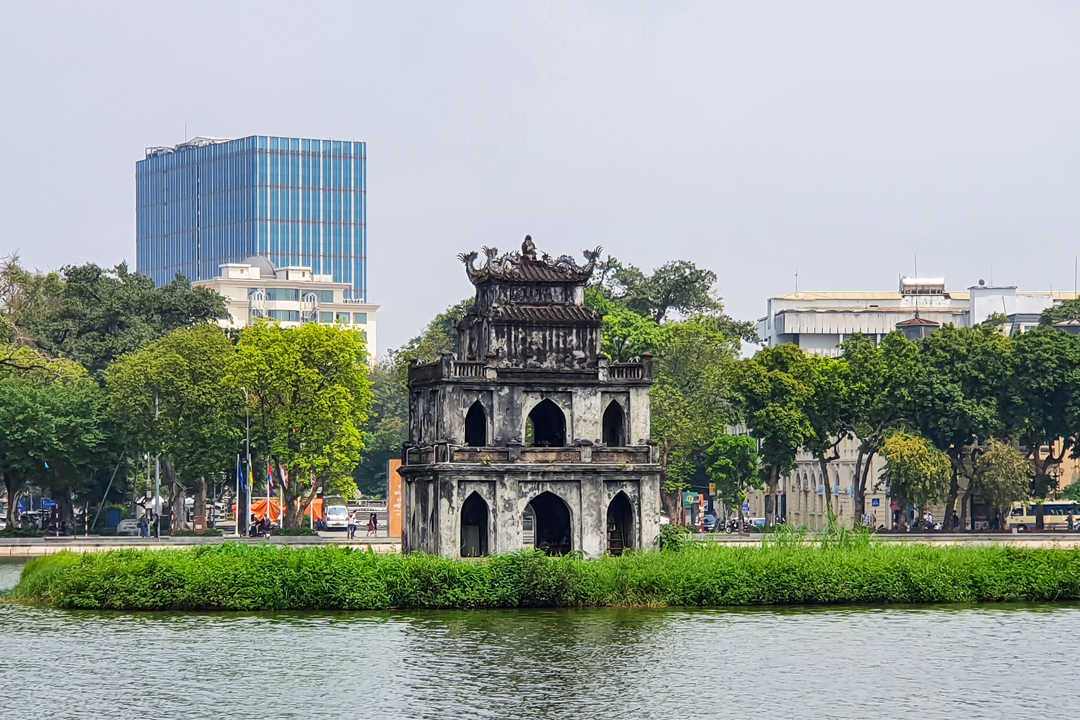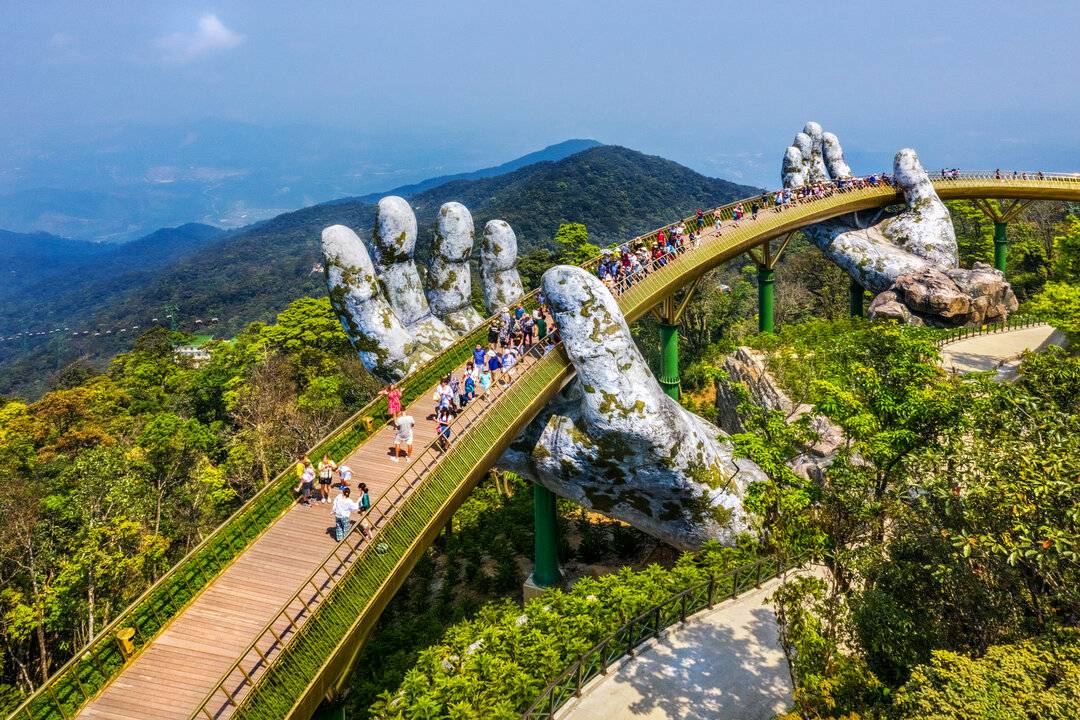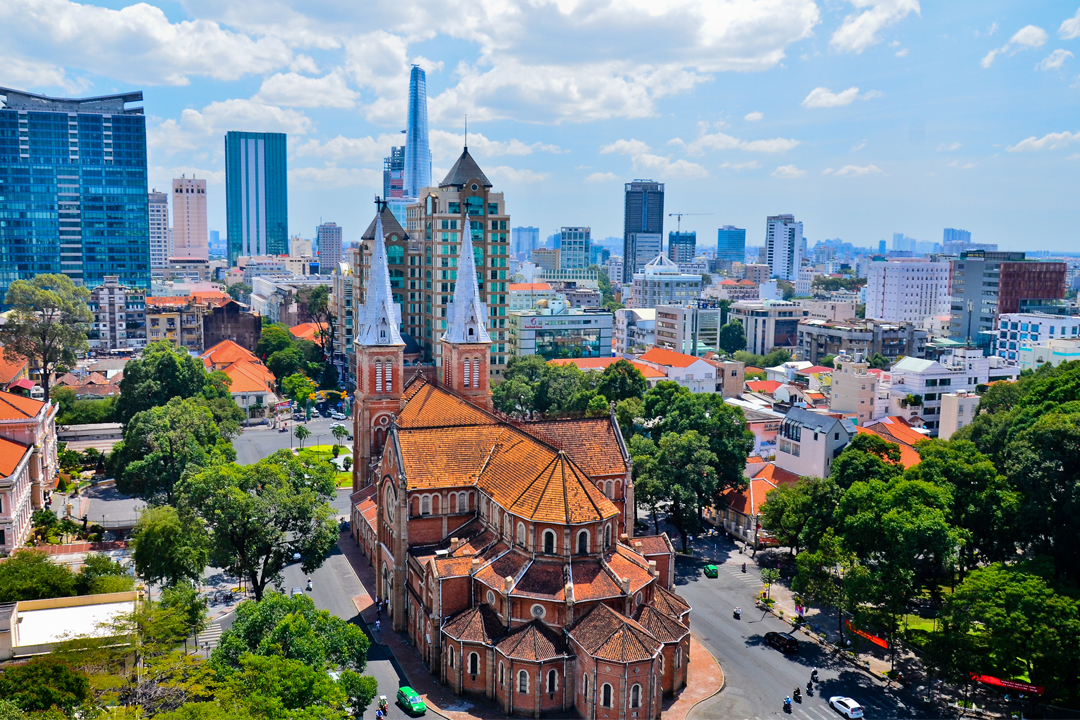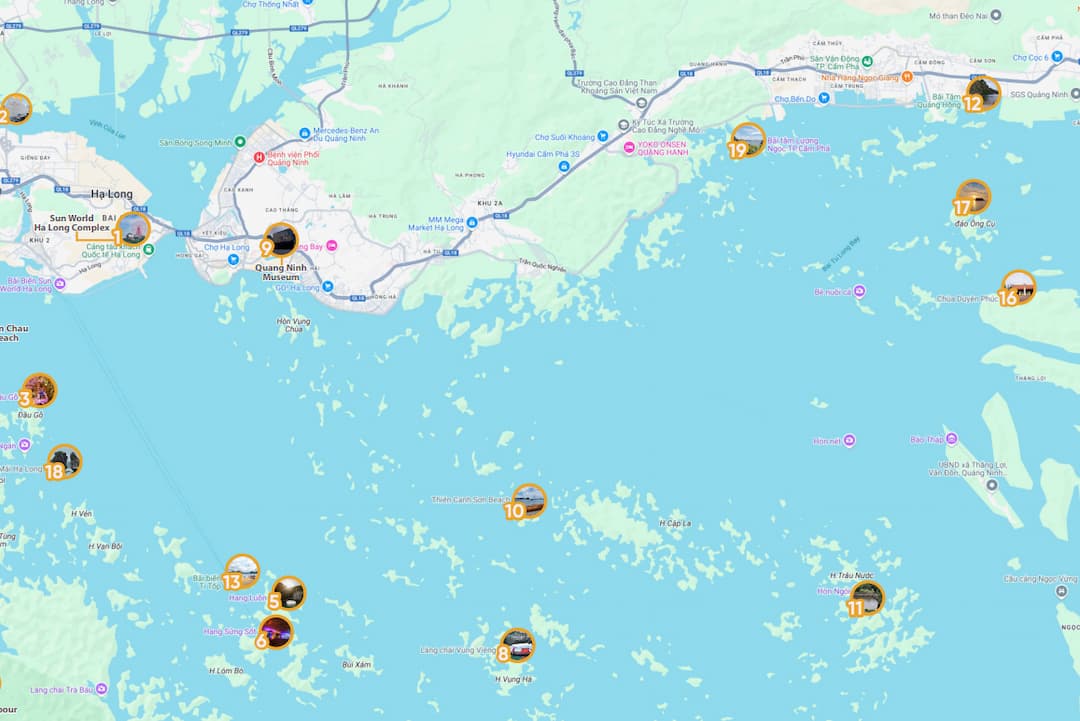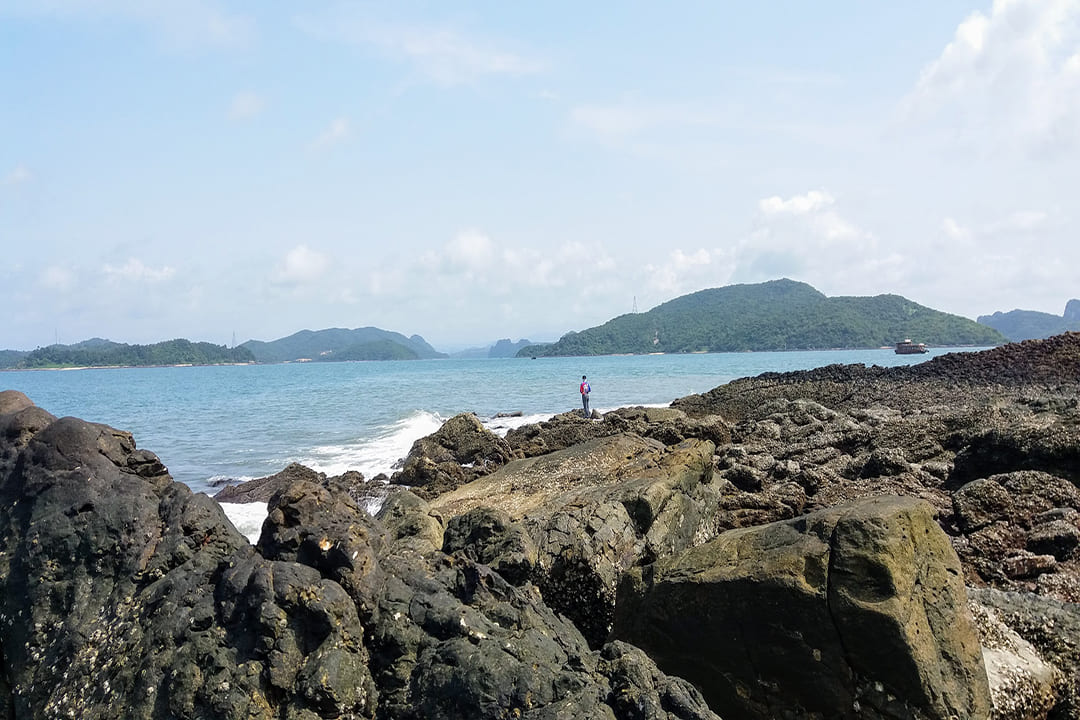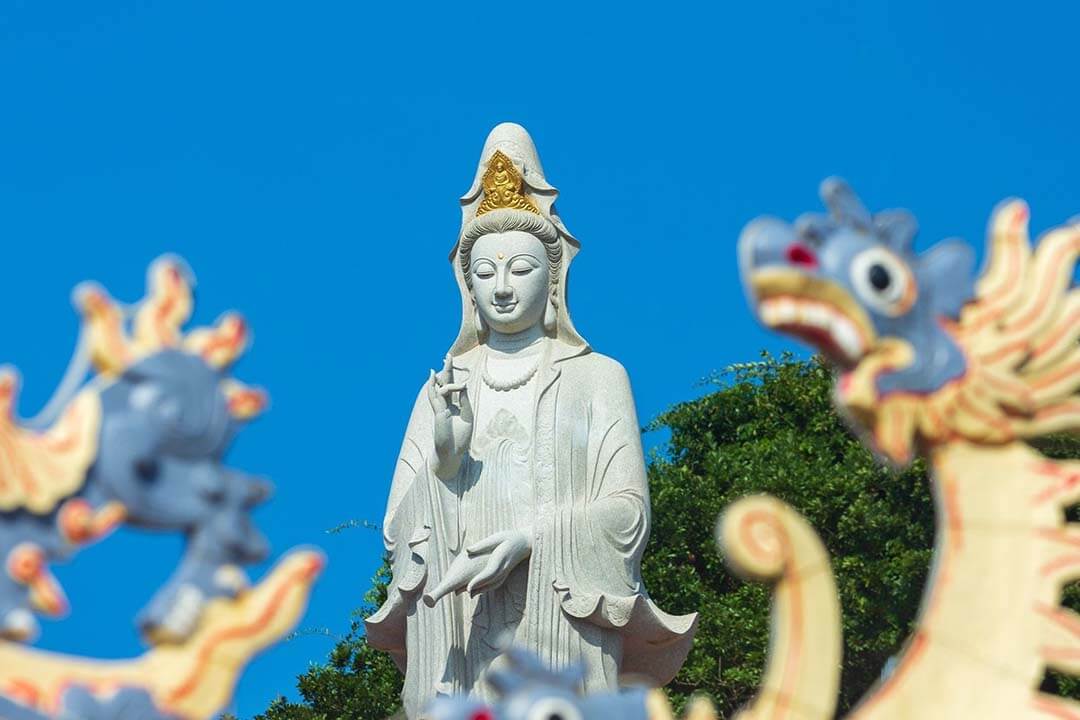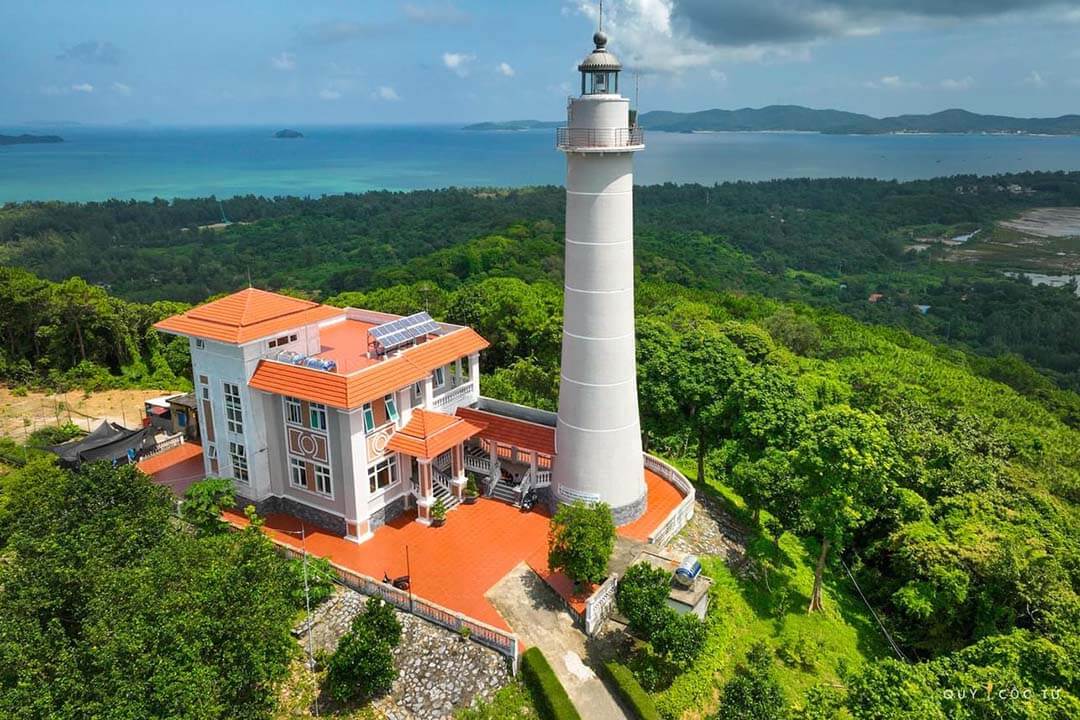Dec - 08 - 2024
Located in the pristine waters of Bai Tu Long Bay, Quan Lan Island boasts an untouched paradise that offers a perfect blend of natural wonders and cultural heritage. The island encompasses pristine sandy beaches, verdant pine forests, and traditional fishing villages, providing travelers with an authentic glimpse into Vietnam's coastal life.
Quan Lan Island hosts a wide array of activities and attractions that cater to different travel preferences. The destination includes water-based adventures like swimming, kayaking, and snorkeling in its turquoise waters. The island's facilities and resources also accommodate cultural explorations through its ancient temples, historic sites, and local fishing communities. The island offers memorable experiences for adventure seekers and culture enthusiasts alike.
This charming island provides modern utilities and accommodation options while maintaining its rustic charm. The island's tourism infrastructure encompasses essential amenities, seaside restaurants, and convenient transportation services. In this article, GTrip will help you find out what is special about Quan Lan Island, things to do, where to stay and so on!
If you are interested in exploring Tuan Chau Island, join our Ha Long Bay Tours!
What makes Quan Lan Island special?
This island is special because of its historical importance and rich cultural significance.
Historical importance
This island stands out as a historical place in Vietnam's maritime legacy. The island played a vital role as part of Van Don - Vietnam's first international trading port during the Ly and Tran Dynasties (11th - 14th centuries). This strategic location served as a crucial gateway for maritime commerce between Vietnam and neighboring countries like China, Japan, and other Southeast Asian nations.
The island witnessed significant military triumphs that shaped Vietnam's history. The waters surrounding Quan Lan held a pivotal role during the Mongol invasions of the 13th century. General Tran Khanh Du's naval forces achieved a remarkable victory in 1288, which was known for turning the tide against the Mongol invasion. This battle has left an indelible mark on the island's historical significance.
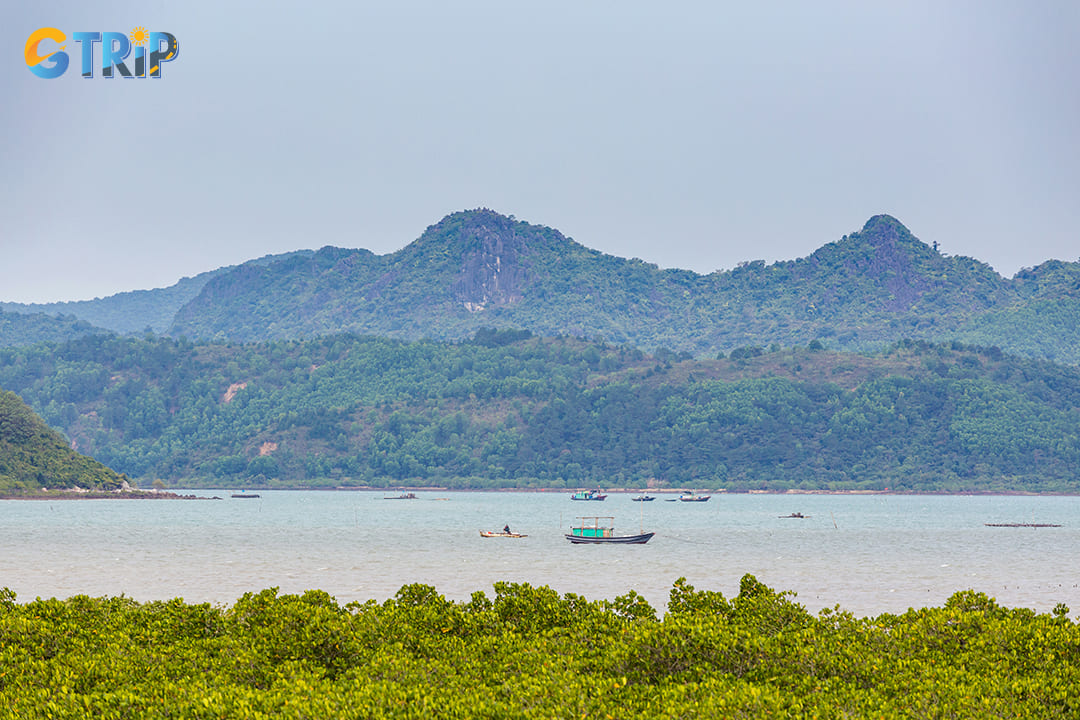
Beautiful landscape of Quan Lan Island
Rich cultural significance
Quan Lan Island celebrates a unique cultural heritage that reflects centuries of diverse influences. The island preserves its rich history through traditional wood carving and stone sculpture craftsmanship. These artistic traditions embody the cultural fusion of Chinese, Southeast Asian, and Vietnamese elements, which can be seen in local temples and communal houses.
The island hosts numerous cultural festivals that foster community spirit and preserve ancient traditions. The Quan Lan Communal House, an 18th-century architectural marvel, nurtures the spiritual connection between locals and their ancestors. This historical structure reflects the island's deep-rooted values and customs.
The local community continues to preserve their unique customs through various rituals and ceremonies. Annual festivals celebrate the island's military victories and cultural heritage. These events embody the spiritual essence of Quan Lan and serve as a living testament to its historical legacy. Traditional crafts and artifacts further distinguish the island's cultural uniqueness, making it a treasure trove of Vietnamese heritage.

The historical Mother Temple of the East Gate on the island shows the rich cultural significance
11 things to do on Quan Lan Island
This island offers an array of activities that let travelers experience its natural beauty, rich culture, and serene coastal environment.
1. Riding on the winding road from Quan Lan Port
The journey from Quan Lan Port takes travelers through a picturesque 15-kilometer coastal route. The winding road leads adventurers past pristine beaches, traditional fishing villages, and rolling hills. Each turn offers breathtaking views of the turquoise waters of Bai Tu Long Bay and the surrounding emerald islands. The road is surrounded by wild grass fields on one side and the endless ocean horizon on the other, providing plenty of photo opportunities at panoramic viewpoints scattered along the way.
The scenic route winds through dense pine forests that provide welcome shade during sunny days, while marine breezes accompany travelers throughout their ride. The journey takes approximately 30 minutes by motorbike, allowing travelers to fully immerse in the island's natural beauty. The coastal route provides frequent glimpses of local life, passing through small hamlets and fishing communities. It eventually leads to beaches like Minh Chau and Son Hao, where travelers can enjoy the scenery or take a refreshing break.
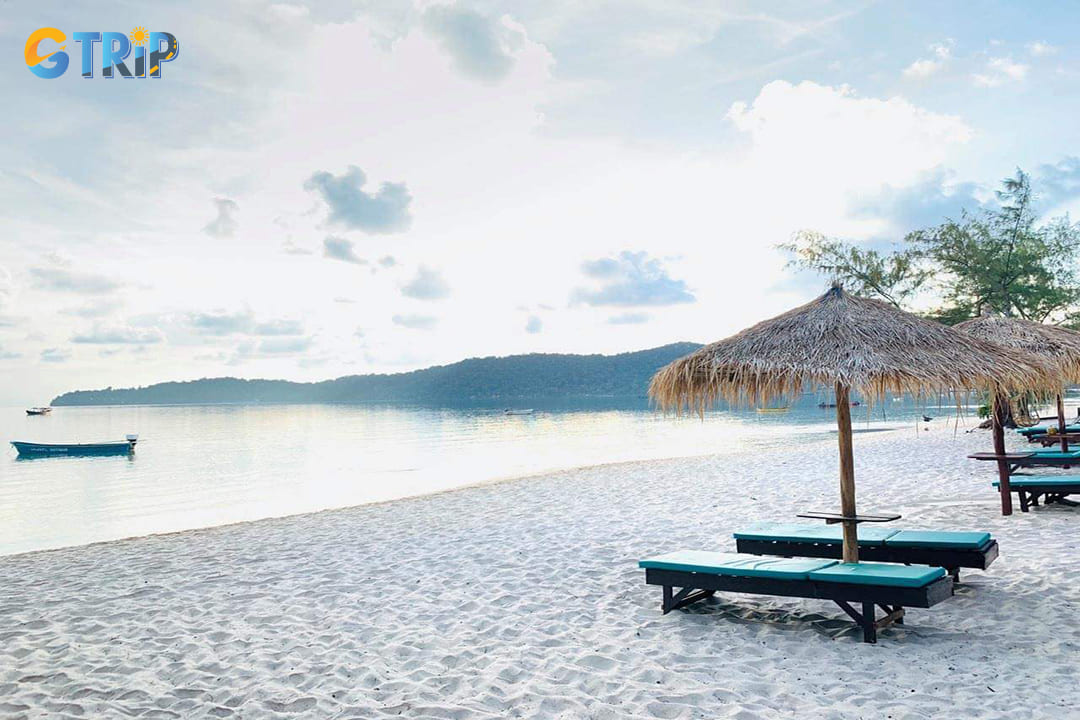
Travelers can visit Minh Chau Beach on the island
2. Admire the beautiful scenery on the top of Wind Strait
The Wind Strait's summit offers an awe-inspiring vantage point that captures the entire splendor of Bai Tu Long Bay. This natural lookout provides unobstructed 360-degree views of the emerald archipelago stretching towards the horizon. The elevated position showcases a stunning panorama of limestone karsts emerging from the crystal-clear waters, while fishing boats dot the seascape like tiny specks on a vast canvas.
The hilltop perspective enables travelers to witness the dramatic interplay of light and shadow across the bay throughout the day. The viewpoint provides a perfect observation spot where the azure waters meet the distant mountains. This scenic overlook captures the essence of Quan Lan's natural beauty, from its golden beaches curving along the coastline to the lush pine forests carpeting the island's interior. The spot also enables photographers to capture breathtaking shots of sunrise and sunset, when the sky transforms into a canvas of vibrant colors reflecting off the calm waters below.
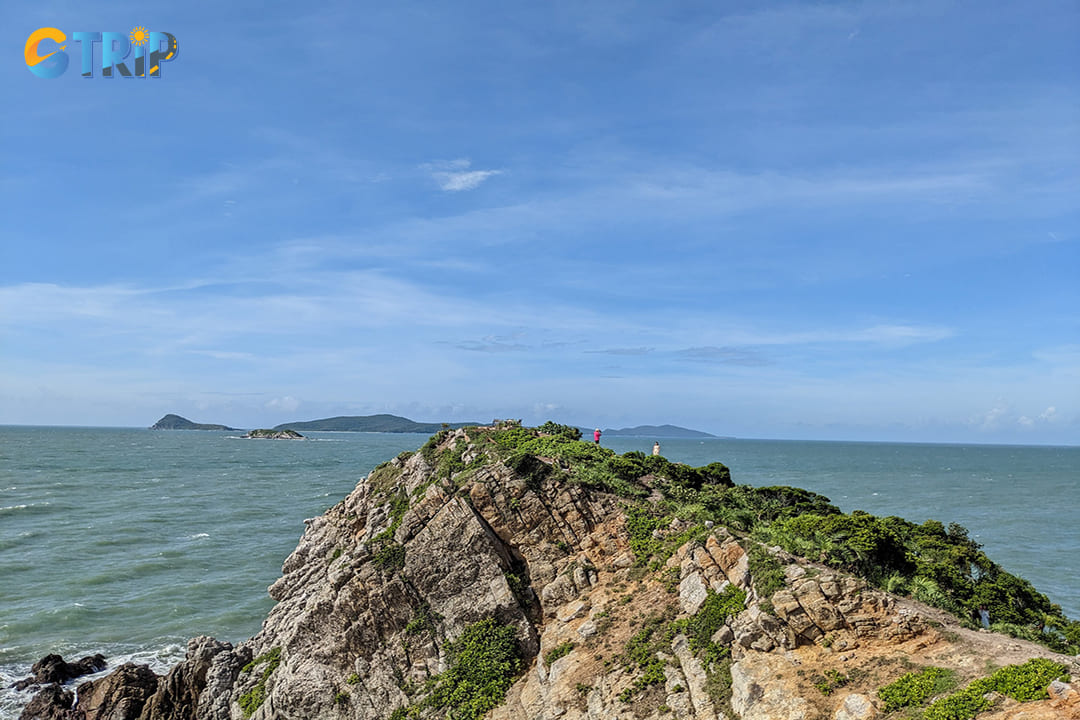
From the top of the Quan Lan Windstrait, you can capture the view of Bai Tu Long Bay
3. Visit the Quan Lan Communal House
The Quan Lan Communal House features remarkable 18th-century architecture with intricate wooden carvings and traditional Vietnamese design elements. This sacred site houses precious artifacts and ancient relics that tell stories of the island's rich history. The communal house holds significant cultural importance for the local community, serving as both a spiritual center and a gathering place for important events.
The historic structure celebrates the island's maritime heritage through its elaborate decorative motifs and symbolic patterns. The main hall features ornate dragon carvings, delicate phoenix sculptures, and detailed religious imagery that reflects traditional Vietnamese craftsmanship. The communal house hosts important ceremonies throughout the year where locals gather to perform age-old rituals and honor their ancestors. During these cultural celebrations, the building transforms into a vibrant hub of traditional music, dance performances, and community gatherings that showcase the island's living heritage.

Quan Lan Communal House holds significant cultural importance for the local community
4. Walking through Tram Forest
Exploring the Tram Forest on Quan Lan Island is a peaceful activity that lets you wander through lush, historic greenery. This forest, located near Minh Chau Beach, is over a century old and offers trails under towering trees and an expansive canopy, creating a cool and refreshing atmosphere. As you stroll, you’ll experience nature in its purest form, with diverse flora and a chance to spot local wildlife. The forest’s serenity makes it an ideal escape from the heat, where you can enjoy fresh air and the calming ambiance of untouched wilderness.
According to local accounts, the forest has been standing for roughly 300 years, making it a vital part of Quan Lan’s history. The combination of stunning landscapes and the tranquil forest atmosphere provides an enriching experience for those seeking both natural beauty and cultural depth on the island.
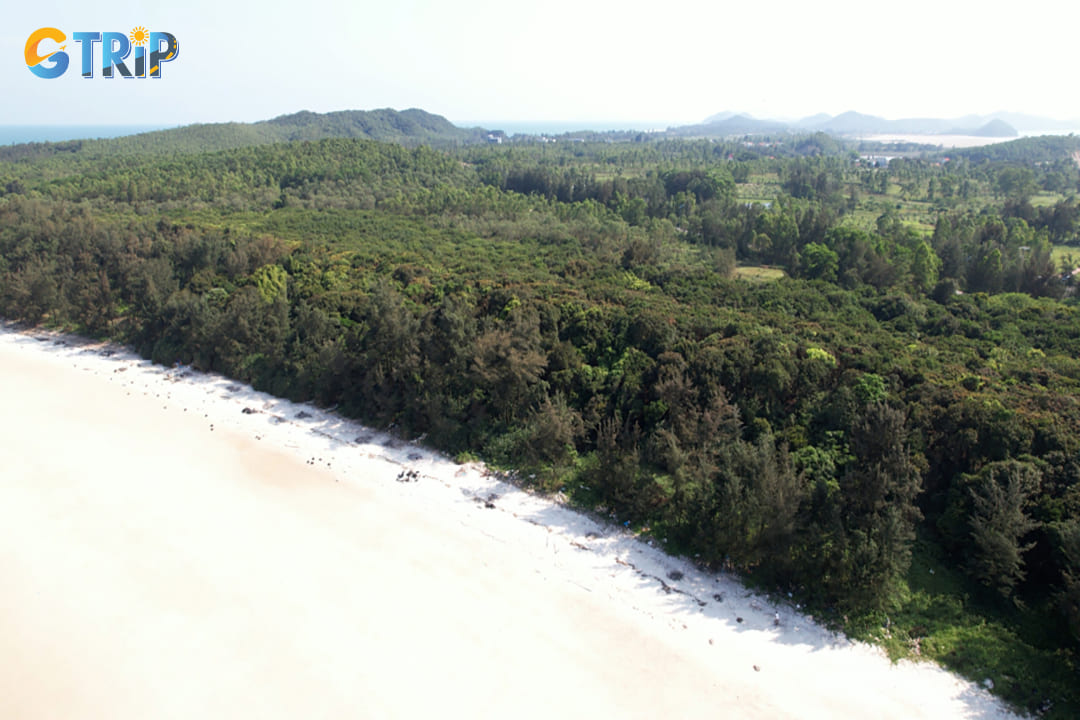
Tram Forest offers trails under towering trees and an expansive canopy
5. Capturing stunning shots of white sand dunes
Quan Lan’s white sand dunes offer a unique setting for capturing breathtaking landscape shots. These pristine dunes feature soft, white sand that contrasts beautifully against the backdrop of lush vegetation and the deep blue sea. The area invites photographers to explore diverse angles and capture the unique play of light across the smooth sand. This interplay creates breathtaking views that showcase the coastal landscape’s natural beauty. The dunes are perfect for photography enthusiasts seeking memorable shots of natural textures and colors in a tranquil, scenic setting.

Beautiful Quan Lan’s white sand dunes along the beach
6. Enjoy swimming at beautiful beaches
Quan Lan Island’s beaches, like Minh Chau and Son Hao, provide the ideal setting to enjoy swimming and relaxation. Here, you can take a refreshing dip in crystal-clear waters along the scenic shoreline, with soft, white sands underfoot and the gentle lapping of waves. The calm, clean water is perfect for a relaxing swim, while the expansive coastline allows for peaceful lounging under the sun. The combination of serene coastal views and pristine beaches makes swimming here a truly refreshing and tranquil experience.

There are many activities on Quan Lan Beach
7. Adventure with kayaking
Kayaking on Quan Lan Island provides an adventurous way to explore its pristine waters, hidden coves, and unique limestone formations. This sport invites you to paddle through the ocean’s calm surface, allowing close-up exploration of the island’s natural surroundings. Kayaking enables you to access areas unreachable by larger boats, offering a sense of freedom and connection to nature. With each stroke, this activity combines the thrill of adventure with the peaceful beauty of Quan Lan’s coastal landscape, making it an ideal way to explore the island.

Kayaking offers a sense of freedom and connection to nature
8. Visiting traditional fishing villages
Visiting Quan Lan’s traditional fishing villages allows you to explore the vibrant culture and heritage of the island’s coastal communities. Here, you can witness the daily routines of local fishermen and discover time-honored fishing methods passed down through generations. These villages offer a unique opportunity to experience the island’s customs, from early morning fish markets to traditional boat-building techniques. Engaging with the community enables a deeper connection to the region’s heritage, providing a firsthand look at the fishing culture that has shaped local life for centuries.
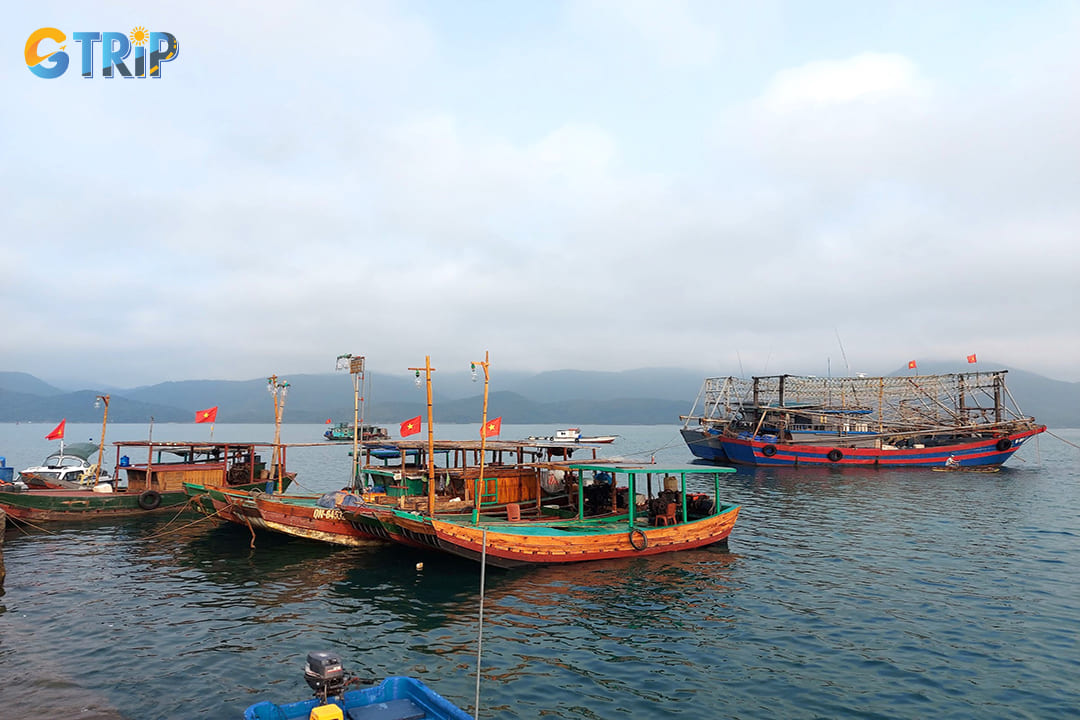
Quan Lan’s traditional fishing villages allows you to explore heritage of the island’s coastal communities
9. Explore ancient house over 100 years old
Exploring the ancient houses on Quan Lan Island offers a unique look into the island’s rich history and heritage. These homes, dating back over a century, are constructed with traditional Vietnamese architectural techniques and crafted from local timber and stone. The homes, with their beautifully aged wooden frames and intricate carvings, showcase the craftsmanship of past generations. They reveal how early residents lived and adapted to the island’s coastal environment.
These historic homes feature wide courtyards, airy layouts, and carved details that showcase both Vietnamese and coastal influences. Walking through these spaces, you can uncover stories of the families who once gathered here, connecting with Quan Lan’s cultural roots. Each house preserves a part of the island’s legacy, offering a tangible link to the lives and traditions that have shaped Quan Lan’s identity.

The ancient house on the island is over 100 years old
10. Shopping at Quan Lan Island’s traditional market
Shopping at the traditional market offers an authentic island experience where you can browse a variety of local goods and products. The market is a vibrant hub filled with fresh seafood, local crafts, and handmade souvenirs, allowing you to explore the culture through its offerings. From intricately woven baskets and textiles to beautifully crafted jewelry and pottery, the market is a great place to shop for unique mementos. Purchasing fresh produce and regional specialties adds to the experience, giving you a taste of Quan Lan’s daily life and traditions.
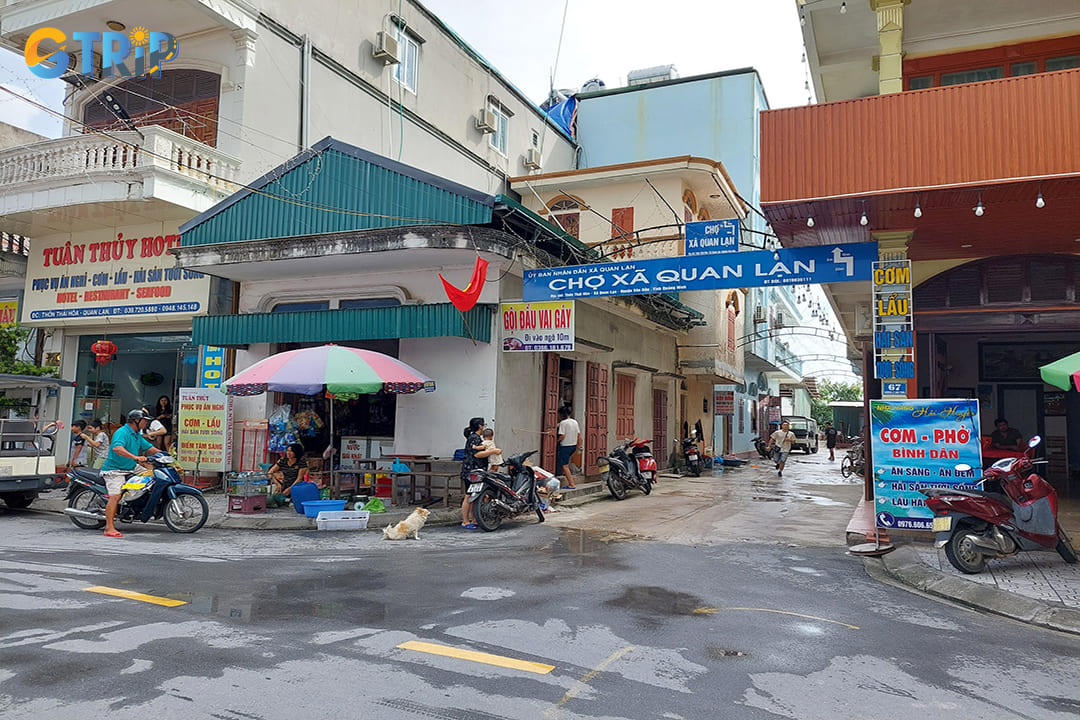
Don’t miss a chance to go shopping at traditional market of Quan Lan
11. Attend the Quan Lan Festival
Quan Lan Festival is held annually from the 10th to the 20th day of the sixth lunar month on Quan Lan Island. This historic and lively event commemorates a significant naval victory over Mongol invaders during the Tran Dynasty. The festival begins with a flag-raising ceremony and drum performances, signaling the start of the vibrant, community-oriented events that follow. It’s a time for the community to honor their heritage and pay tribute to General Tran Khanh Du, whose bravery and leadership are integral to the festival's purpose.
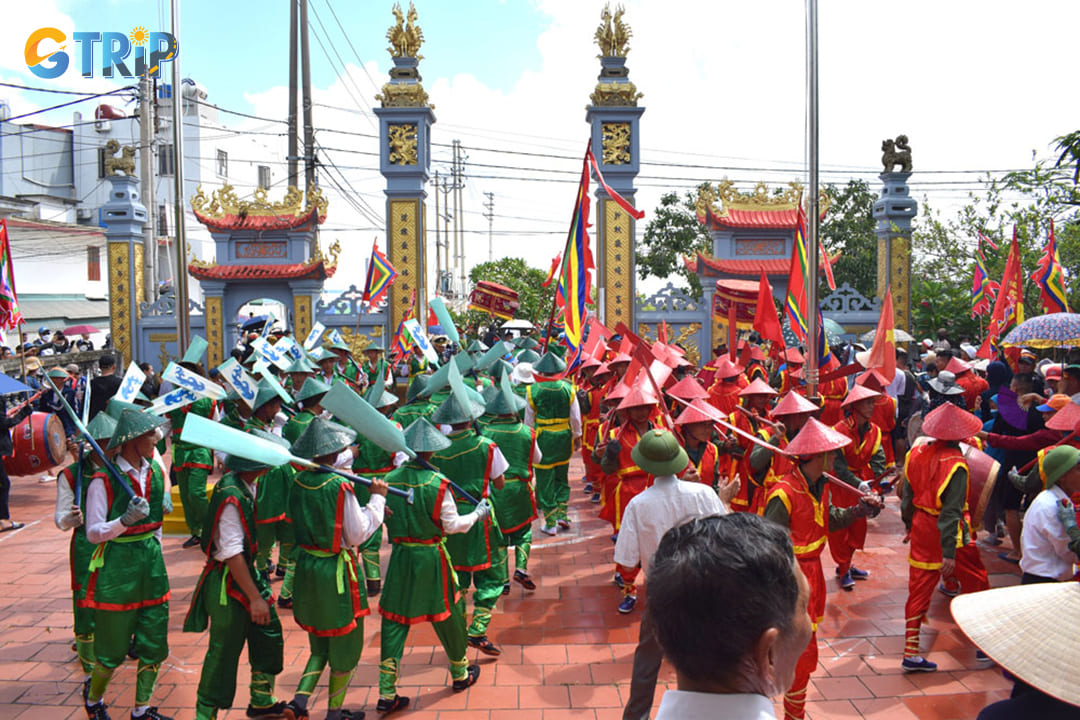
The atmosphere of the Quan Lan Festival at the temple
Central to the celebration are traditional activities such as the palanquin procession and ritual sacrifices, which honor local deities and ancestors. Martial arts displays, folk games, and cultural performances also enliven the festival, providing insight into the island’s cultural richness. These events foster strong pride and historical connection, bridging past and present to let both locals and tourists experience Quan Lan’s deep-rooted traditions.
The festival concludes with a thrilling rowing competition, where local teams race in traditional boats, showcasing both athletic skill and communal spirit. The excitement of the race, combined with cheering crowds, creates an exhilarating atmosphere, uniting the island’s residents and visiting travelers in a shared celebration. Quan Lan Festival is not only a celebration of victory but also a meaningful expression of cultural identity and community pride, leaving a lasting impression on all who attend.

Rowing competition is an amazing activity of Quan Lan Festival
When is the best time to visit Quan Lan Island?
The ideal time to visit this island is between April and October, during the dry season, offering warm temperatures and pleasant weather perfect for outdoor activities. This period sees clear skies, with temperatures ranging from 25°C to 35°C (77°F to 95°F), making it ideal for exploring beaches, kayaking, and discovering local villages.
The peak tourist season occurs from June to August, coinciding with the lively Quan Lan Festival, which celebrates the island's culture. However, visiting in the shoulder months of April, May, or September allows for a quieter experience, as the rainy season from November to March can bring disruptions.

Visit Quan Lan between April and October to observe the view of sunset
How to get to Quan Lan Island?
There are three main ways to reach Quan Lan, each offering its own unique experience and convenience.
From Cai Rong Port
The most popular and direct route to the island is by ferry from Cai Rong Port in Van Don District. The ferry ride typically takes around one hour, making it the fastest way to access the island. Ferries depart regularly throughout the day, with the first ferry leaving around 8:00 AM and the last at 3:30 PM. The cost for a one-way ticket ranges from 50,000 to 70,000 VND (approximately $2 to $3). This route is the most commonly used, offering a smooth and quick connection to the island.
From Ao Tien Port
If you're looking for a faster, scenic route, you can take a speedboat from Ao Tien Port. The boat ride takes about an hour, offering an opportunity to enjoy beautiful views of Bai Tu Long Bay along the way. The price for this route is slightly higher, ranging from 100,000 to 200,000 VND (around $4 to $7.8) per person, plus a port fee of 30,000 VND ($1.18). Ferries from Ao Tien Port are frequent, but schedules can change depending on the season, so it's advisable to check in advance.
From Ha Long City
For travelers starting from Ha Long City, taking a ferry or boat is another option. This route takes approximately 2.5 to 3 hours, and the fare typically ranges between 300,000 and 500,000 VND (around $12 to $20). Ferries from Ha Long City operate less frequently than those from Cai Rong Port, with one or two trips per day. While the trip is longer, it offers scenic views of the coastline, making it a great choice for those seeking a more leisurely, picturesque journey.

Reaching the island by boat offers this view of landscape
Where to stay on Quan Lan Island?
Quan Lan offers a variety of accommodation options ranging from budget-friendly hotels to more luxurious stays, catering to different preferences. Here are some recommendations for you:
Tuan Thuy Hotel, located in Thai Hoa Village, is an affordable choice with rates starting from 320,000 VND (~$13) per night. This hotel offers air-conditioned rooms, private bathrooms, and free wi-fi. It is ideal for travelers looking for a clean and comfortable place to stay. The on-site restaurant serves budget-friendly meals, enhancing the overall experience.
Soha Homestay, situated near Minh Chau Beach, is a peaceful option for those who want a more intimate experience. The price ranges from 700,000 - 1,200,000 VND (~$30 - 50) per night, depending on room type and season. The homestay features cozy rooms with simple, clean interiors, air conditioning, and private bathrooms. Guests can enjoy a garden, communal spaces, and some rooms that offer balconies with beautiful views of the island’s serene surroundings. The hosts are known for their warm hospitality, creating a homely atmosphere.
For those seeking more modern amenities, Phoenix Minh Chau Hotel offers a luxurious stay starting at 730,000 VND (~$29) per night. Located in Minh Chau Commune, the hotel boasts large, comfortable rooms with air conditioning, free wi-fi, and private balconies with stunning views. The hotel also features an on-site restaurant serving both local and international cuisine, a bar, and a 24-hour front desk. This hotel is perfect for those seeking comfort, convenience, and beautiful views of Quan Lan Island.
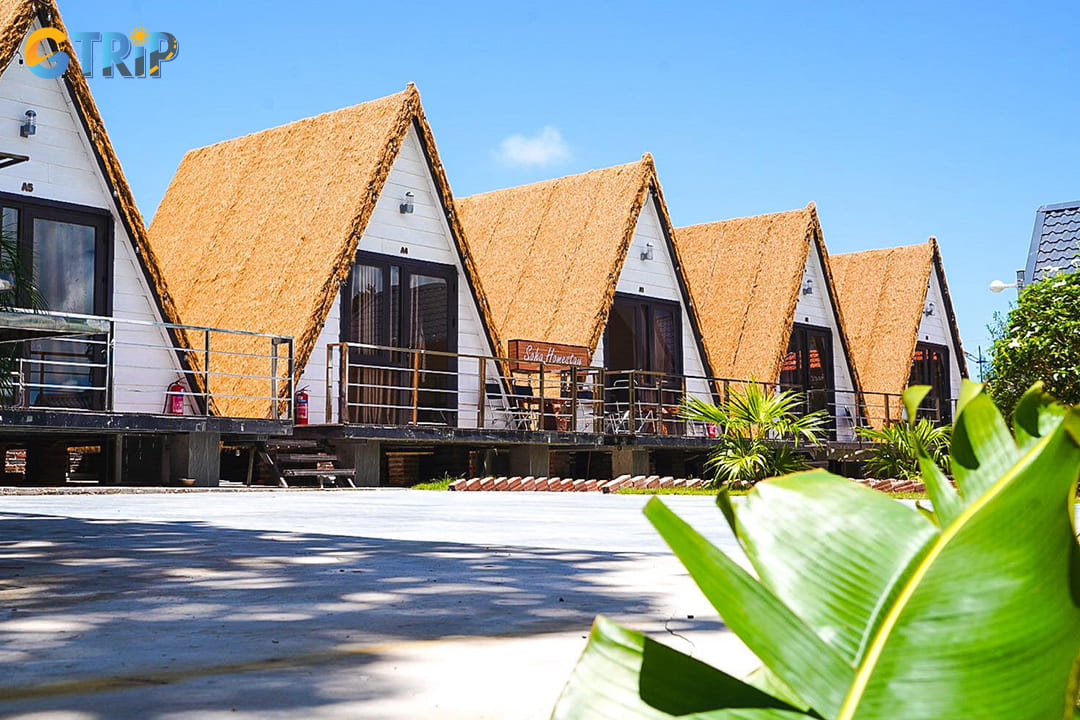
Soha Homestay near Minh Chau Beach on the island
Eco-tourism on Quan Lan Island
Quan Lan has made eco-tourism a core focus, aiming to preserve its unique ecosystems, marine life, and cultural heritage while providing meaningful travel experiences. The island promotes sustainable tourism by encouraging responsible practices that protect natural resources, reduce waste, and minimize environmental impact. Guided eco-tours offer people insights into Quan Lan’s history, fishing culture, and natural landscapes. They foster appreciation for the area’s ecological and cultural significance.
Local businesses are actively involved, offering eco-friendly accommodations and services that support the island’s conservation goals. Eco-lodges, green hotels, and sustainable seafood options reflect Quan Lan’s dedication to eco-tourism, offering travel choices that are immersive and environmentally conscious. These initiatives not only preserve the island’s beauty but also provide economic benefits to the community, emphasizing responsible tourism and conservation. Through these efforts, Quan Lan Island is shaping a tourism model that balances tourists enjoyment with environmental protection and cultural preservation.

Encourage responsible practices to protect natural resources and green landscape
Tips when visiting Quan Lan Island
Here are some smart tips to consider when you visit this island. These guidelines will help you ensure a smooth and enjoyable experience while preserving the island's natural beauty.
- Plan your trip: Check the ferry timetable and purchase tickets online in advance to avoid missing the boat or tickets selling out.
- Pack smart: Bring essentials like sunscreen, comfortable shoes for walking, a camera to capture the island’s beauty, and a spare phone charger as electricity can be expensive.
- Cash is key: ATMs are limited, so remember to bring enough cash for your trip.
- Respect local customs: Be mindful of local traditions, especially during festivals like the Quan Lan Festival.
- Safety first: You should always follow safety guidelines when participating in water activities.
- Dress appropriately: You should avoid overly revealing clothes when visiting temples or during religious ceremonies.
- Weather preparedness: Keep in mind the island’s tropical climate, and be ready for sun, heat, or occasional rain.

